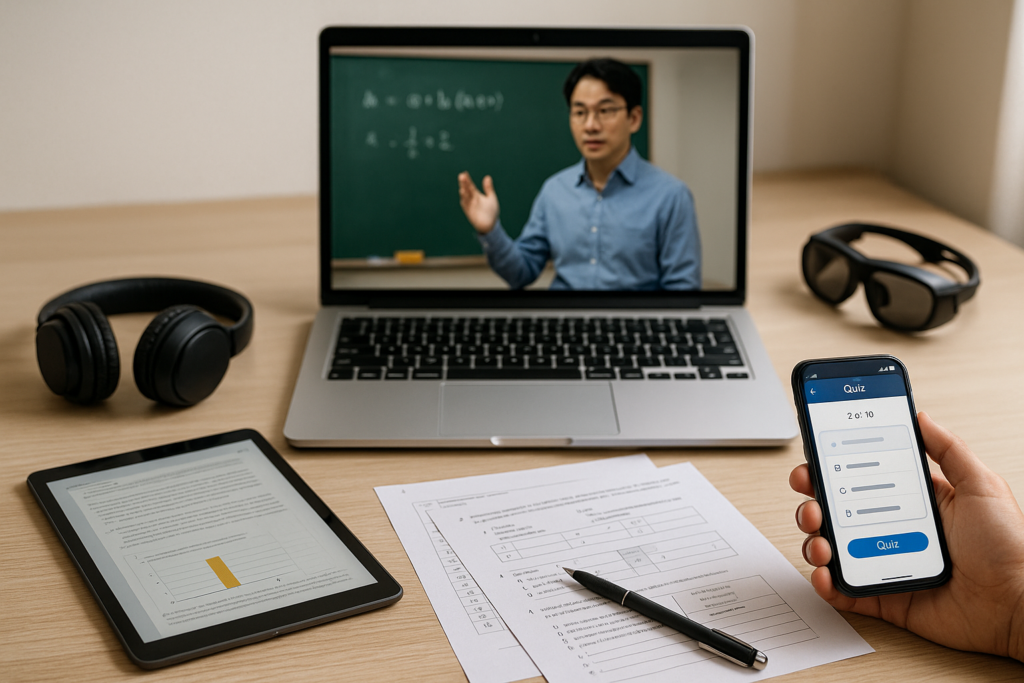Introduction
EBS Learning Tools empower learners by providing free, high-quality educational resources that support diverse study needs. From video lectures and interactive quizzes to mobile apps and printed workbooks, these tools help students reinforce class material, explore new topics, and develop independent learning habits. This article explores the origins, evolution, and impact of key EBS Learning Tools, illustrating who benefits most and the measurable outcomes achieved.
A Brief History of EBS Learning Tools

The Korean Educational Broadcasting System (EBS) launched in 1974 as a television network dedicated to educational content. By the 1990s, EBS expanded into satellite broadcasting, reaching remote regions with instructional programming. In 2000, the platform pivoted toward digital services, introducing the EBS website and downloadable materials. The official launch of the EBS Learning Tools suite in 2010 marked the organization’s commitment to leveraging technology for learning equity, ensuring every student regardless of location or income could access curriculum aligned support.
Key Milestones:
- 1974: EBS founded as KBS Educational Television
- 1995: Satellite channel begins nationwide coverage
- 2000: EBS website debuts with archive of televised lectures
- 2010: Official release of EBS Learning Tools platform
- 2018: Mobile app update adds offline downloads and interactive features
Why EBS Learning Tools Were Introduced
EBS Learning Tools emerged to bridge educational gaps by offering standardized lessons aligned with Korea’s national curriculum. The initiative aimed to:
- Enhance Equity: Provide free, high-quality instruction for students in underserved areas
- Supplement Classroom Teaching: Offer extra practice and clear explanations for challenging subjects
- Foster Self-Directed Learning: Equip students with resources to study beyond school hours
- Support Lifelong Learning: Open courses to adult learners, parents, and educators
By addressing these needs, EBS Learning Tools have become a cornerstone of Korea’s educational ecosystem.
Core Examples of EBS Learning Tools
1. EBS Video Lectures
High-definition lectures covering math, science, language, and social studies. Each video aligns with curriculum standards and includes on-screen annotations to highlight key concepts.
2. EBS Interactive Quizzes
Online assessments with instant feedback. Students can retake quizzes to master topics, while teachers review aggregated results to identify class-wide strengths and weaknesses.
3. EBS Mobile App
A smartphone application that allows users to download videos and worksheets for offline use. Push notifications remind students of upcoming quiz deadlines and recommended lessons.
4. Printed Workbooks and E-Books
Curriculum-based workbooks available for free download or at low cost. These include practice exercises, sample problems, and step-by-step solutions.
5. Virtual Classroom Platform
Live-streamed classes and group study rooms where students can interact with instructors in real time. Features like verbal prompts with augmented reality cues guide learners through complex experiments in STEM subjects.
Who Benefits from EBS Learning Tools

- K-12 Students: Reinforce daily lessons, prepare for exams, and fill knowledge gaps
- Teachers: Access ready-made lesson plans, multimedia materials, and analytics dashboards
- Parents: Support children’s learning at home with structured resources and progress tracking
- Adult Learners: Explore new skills, language courses, and professional development topics
- Rural Communities: Overcome geographic barriers with broadcast and offline digital access
By democratizing access to quality education to ensure that no learner is left behind.
Measuring the Impact of EBS Learning Tools
- Increased Test Scores: Schools that integrate EBS video lectures into study routines report an average 12% improvement on standardized exams.
- Higher Engagement Rates: Interactive quizzes see completion rates above 85%, compared to 60% for traditional paper tests.
- Reduced Educational Gaps: Rural student performance on national assessments has risen by 8% since 2010, narrowing the urban-rural achievement divide.
- Teacher Efficiency: Educators save an estimated 3–5 hours per week by leveraging EBS-prepared lesson plans and materials.
These results demonstrate the transformative power of well-designed digital learning platforms.
Integrating EBS Learning Tools into Daily Study
- Set a Routine: Schedule specific time slots for EBS video lessons and quizzes
- Mix Formats: Combine videos, workbooks, and mobile app sessions to reinforce learning
- Track Progress: Use built-in analytics to monitor quiz scores and identify areas for review
- Engage Peers: Form virtual study groups via the EBS platform to discuss challenging topics
- Seek Feedback: Share quiz results with teachers or mentors for targeted support
By following these steps, learners can maximize retention and build confidence across subjects.
Challenges and Future Directions
While EBS Learning Tools have achieved wide adoption, challenges remain:
- Digital Divide: Some families still lack reliable internet or modern devices
- Awareness: Not all educators and students know about the full range of available tools
- Customization: Current platforms offer limited personalization beyond grade and subject filters
Looking ahead, EBS plans to introduce AI-driven adaptive learning that tailors content to individual performance and learning styles. Expanding community outreach and device donation programs will further close the digital divide.
Conclusion
EBS Learning Tools have evolved from televised lectures to a comprehensive digital ecosystem that supports learners of all ages. By familiarizing themselves with these resources video lectures, interactive quizzes, mobile apps, workbooks, and virtual classrooms students, teachers, and communities unlock the full potential of free education. The measurable gains in test scores, engagement, and equity underscore the tools’ lasting impact. As EBS continues to innovate with adaptive technologies and broader outreach, its mission to democratize quality learning will only grow stronger.

I’m Ethan Richards, the guy running the show at “Acknowledgment Templates.” I’ve been playing with expressions and formats to make acknowledgment writing a whole lot of fun. Over at Acknowledgment Templates, we’re here to make your acknowledgment section incredible. Let’s add some professionalism and gratitude to your project together!



